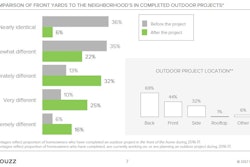Has this happened to you? You have a great call with a very interested client, but once you hang up you realize you don’t know what’s next, and if and when you’ll close the deal. How do you make sure you don’t end up with a sales process that leaves both you and your client hanging?
Determining next steps is the most important step in any client meeting, and is crucial in making sure you can move forward and close the deal without any hiccups.
(Interested in learning how to build your brand in the digital age? Sign up for the Houzz e-book here.)
“Ideally we set up the next meeting or at least a time frame within which to follow up before concluding each meeting or phone call,” says David Buchsbaum of Atlanta Closet & Storage Solutions in Atlanta. “Never end a meeting or an appointment without an agreement and a time frame for the next step.”
Without next steps in place, the timeline for closing the sale could get bogged down with scheduling conflicts, or you could play a never-ending game of phone tag, costing you unnecessary time and energy.Here are four next steps to take.
1. Recap the Meeting
Summarizing the key points of the meeting is not only a good way to remind all parties about what was discussed, but also shows your client that you have been listening to his or her needs. If necessary, take notes during the meeting so you can reference them at the end.
“I want my clients to enjoy the process, and you can only do that if you have clear direction and clear expectations,” says Meg Habasevich of Purposeful Interiors in Tampa Bay, Florida. “I created a questionnaire that I fill out as I’m speaking with my clients. Because I am writing down everything as we are talking, my clients feel assured that I am really listening to what they are saying.”
Related: Are You Designing Around a Deck? Have Your Clients Bookmark Ideas they Want to Include
2. Discuss Timing and Tasks
It’s important to determine the next actions necessary on both sides of the table, and the timing involved. Will you be sending an estimate for a project? If so, when? Does the client need to create an ideabook so you can understand the vision better? What date should the client send it to you by?
Related: Does Your Client Have a Pool? Ask Them to Save Landscape Designs They Like
If the next step is another meeting or phone call, pull out calendars and put a date and time in writing. Who will call whom? What will be discussed?
3. Request Feedback
Client conversations can move fast, and it’s quite possible that you’ve missed a key point or action item. Once you’ve discussed timing and tasks, ask if there’s anything you may have missed or that the client would like to add to the to-do list. Not only is this a good practice for covering your bases, but it also lets clients know that their involvement is a valuable part of the process.
4. Follow Up With an Email
Whether you discussed your next steps over the phone or in person, following up with an email puts your plan in writing and decreases the chance of miscommunication. Both you and your client will be able to refer back to that email as a reminder of the things that need to be done and by when.
This story was written by the Houzz Industry Marketing team.




















